How to Be a Beekeeper
10 tips to get your own hives humming in no time
By Tara Verna | Photos by Randy Berger PhotographyThousands of honey bees zip and dive around Betsey Spencer’s hatless and jacketless body.
“They’re starting to get a little rambunctious,” the 67-year-old beekeeping mentor says calmly.
“Well, we woke them up, didn’t we?” replies 74-year-old beekeeping mentee Katie Verna.
Katie peers into the open hive to see frames stuffed with pollen, honey and brood. “Gol dang! You girls have been busy!” she exclaims. As bees buzz and brush her bare legs, she fondly chastises them, “Hey, get off my sock!”
When Katie first got involved in beekeeping three years ago, the Creedmoor resident and Wake Electric member took a class through a beekeeping store in nearby Raleigh. She graduated with her first hive and immediately reached out to a county beekeeping association, which set her up with Betsey, an experienced beekeeper in Franklinton. That’s when Katie’s beekeeping education truly began, fueled by Betsey’s 16 years of hands-on wisdom earned by maintaining as many as 140 hives.
The two share a passion for these prolific pollinators—in fact, we all should. It’s estimated that as much as one-third of the fruits, vegetables and nuts we eat only grow because these crops are pollinated by bees, according to the American Beekeeping Federation.
You like to eat? Then you like bees.
‘Bee’ a beekeeper
So maybe you would like to help feed the world and bump up the pollinator population? Or maybe you’re just in it for the honey (no judgement). Here are the top 10 tips to kick off your beekeeping venture:
1Ask yourself: “Can I have bees where I live?”
Make sure local regulations allow you to have bees. If you have an acre of land, this should be able to support a hive or two. Honey bees forage up to 5 miles from their home base, so they should do well if you have plenty of flowering plants, water and sunshine within your vicinity.
2Make a beeline to learn.
Read some books, or visit some sites like honeybeesuite.com. Try “Simple, Smart Beekeeping” by Kirsten Shoshanna Traynor, or something gorgeous and moving like the memoir “A Book of Bees” by Sue Hubbell. Get inspired by these fascinating creatures. Bee biology, Varroa mites, flowers, beekeeping jargon, pollination—knowledge yields the wherewithal to keep your hives alive.
3Take a class.
Local beekeeping stores (like Bailey's Bee Supply) and clubs often offer classes that run January through March and culminate in your own package of 12,000+ bees for kicking off your first hive.
4Find a mentor.
This is where the bulk of your learning will happen. A local beekeeping club should be able to pair you with an experienced keeper who should be willing to dive into your hives with you. An hour with such a person is worth its weight in golden honey.
5Go with the flow.
Beekeeping is a process. Put aside grand visions of sharing your vast honey harvest with friends and concentrate on learning. You will lose hives. You will make mistakes. But you will also become a better beekeeper.
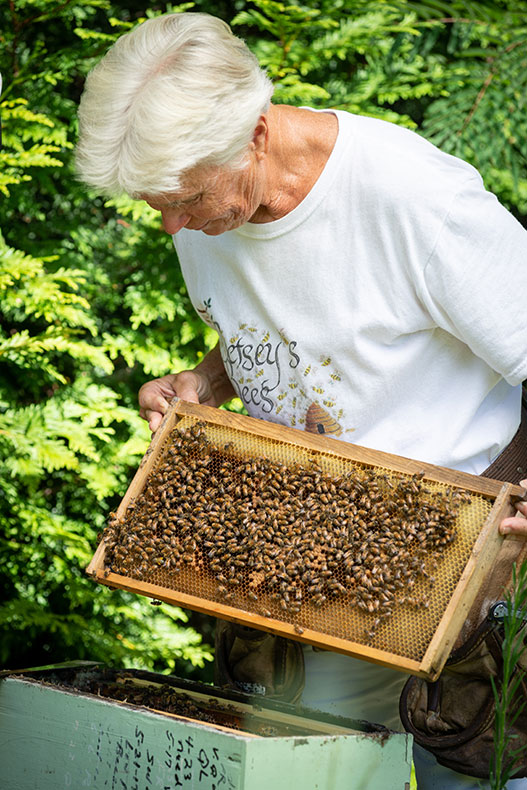
Betsey “reads” a frame to determine the health of the hive and whether her help is needed. She will write notes on the side of the hive in order to track its status.
6Share the bounty.
With the bees. Don’t be greedy; remember that bees need honey, too! The first year or two, you may need to let them have it all until they are better established.
7Double up.
Two hives is better than one. If one hive is failing and the other thriving, you can steal brood or food from the strong hive to supplement the weaker one.
8Play with your bees.
Learn by observing your new pets. See their pollen baskets, watch their orientation flights, pick out the queen (she can be hard to locate, like a game of “Where’s Waldo?”) and her entourage. Reverence!
9Keep an eye on your hives.
Inspect your hives every 7–10 days in order to head off disease and maintain a healthy hive. Much more and your interference becomes a detriment to their work.
10 Accept that stings happen.
Stings are unavoidable when working with bees. Be aware of any allergies you or your family may have, and be ready for a sting. But take heart that honey bees are generally docile. Plus, you can minimize stings with protective gear, and by working carefully and calmly around bees (most stings occur when keepers unknowingly smash a bee). If stung, you can use an extractor kit to quickly remove venom from the wound. Or, in a pinch, even a small stick can be used to scrape the stinger from the sting site.

Some beekeepers mark their queens to be able to spot them quickly. The health of the queen is the health of the hive so it’s important to keep tabs on her.
‘Bee’ an advocate
Katie and Betsey work their bees in harmony, ebbing and flowing around one another as they read hive frames like a book, looking for signs of disease, hunger, overcrowding or lack of a queen.
“Used to be, bees took care of themselves,” Betsey explains. “These days, you can’t just be a ‘bee haver,’ you must manage them if you want them to survive.”
Perhaps managing bees isn’t for you—space, money, time and allergies can all get in the way. Luckily, there are plenty of other ways to be there for the bees.
“You don’t have to be a beekeeper to help bees. In fact, it is just as important to advocate for them,” Betsey says.
Help preserve the bees’ environment and food supply. In the same ways that you look to feed yourself and your family healthy food, people need to grow nutritious food for bees. But we’re not. Farmers grow crops that are cut at 10 percent bloom to maximize protein content for livestock, according to honeybeesuite.com. Herbicides wipe out weeds along highways and drainages. And invasive species may provide forage briefly, but then wipe out other native species that would have provided a longer bloom season.
In the end, we will conserve only what we love; we will love only what we understand and we will understand only what we are taught.
How to help? Grow your own diverse, pesticide-and-herbicide-free plants that bloom year-round. (Weeds count, too!) Put out shallow water stations with stones for bee landing spots. Also, consider lobbying legislators and educating others to change laws and habits to be more amenable to bees.
Support efforts to educate. From STEM programs for children and “teaching apiaries” created by beekeeping organizations, to state fair exhibits and 4-H programs, education is key to a sound future for bees.
As famed Senegalese forestry engineer Baba Dioum put it, “In the end, we will conserve only what we love; we will love only what we understand and we will understand only what we are taught.”
Buy local honey. There’s no greater win-win than a local honey purchase at a farmer’s market. Support the beekeeper’s efforts and feed your sweet tooth, all in one go!
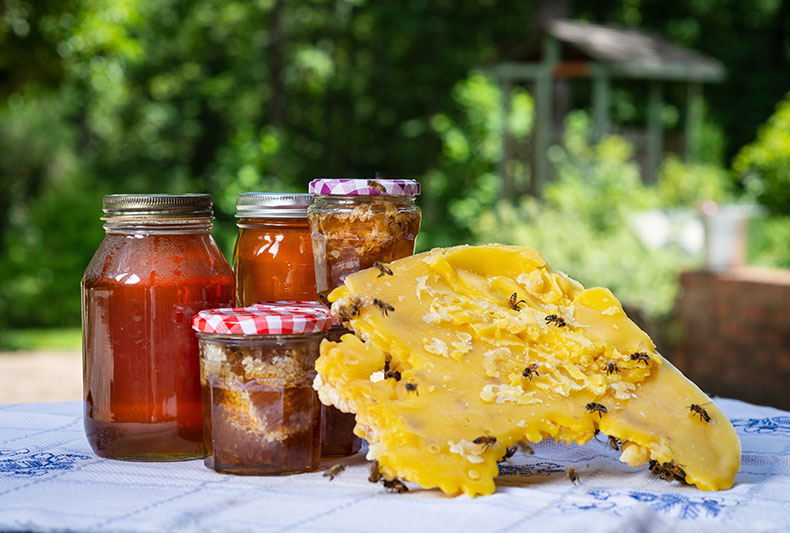
Some of the fruits of bee labors: beeswax that Katie has rendered, plus honey with and without honeycomb.
‘Bee’ amazed
If nothing else, the more you learn about bees, the more respect you will have for this tiny insect. The worker honey bees (females who care for the hive) live 6–8 weeks and often die because their wings wear out. According to honey.com, these ladies fly 55,000 miles to produce one pound of delicious honey filled with nutrients, antioxidants and the ability to hasten healing and keep coughs at bay.
Given that, it’s the least we can do to be good stewards of the environment on the bees’ behalf.
Learn even more about bees!
From safe havens for pollinators to a bee safety gear guide, here are a few other articles about this important insect.
About the Author
Tara Verna is a beekeeper and the creative director for Carolina Country magazine. Katie Verna is her mother-in-law.-
Share this story:

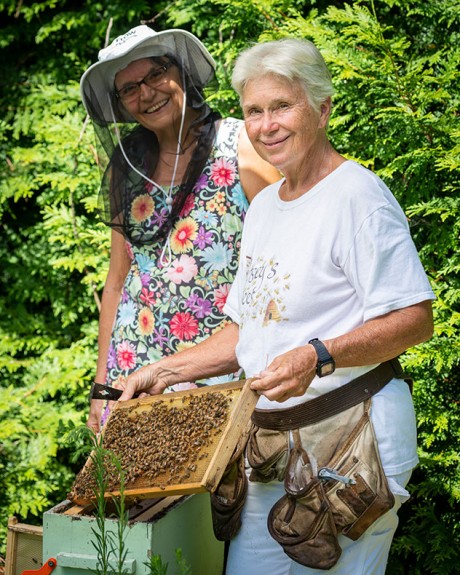

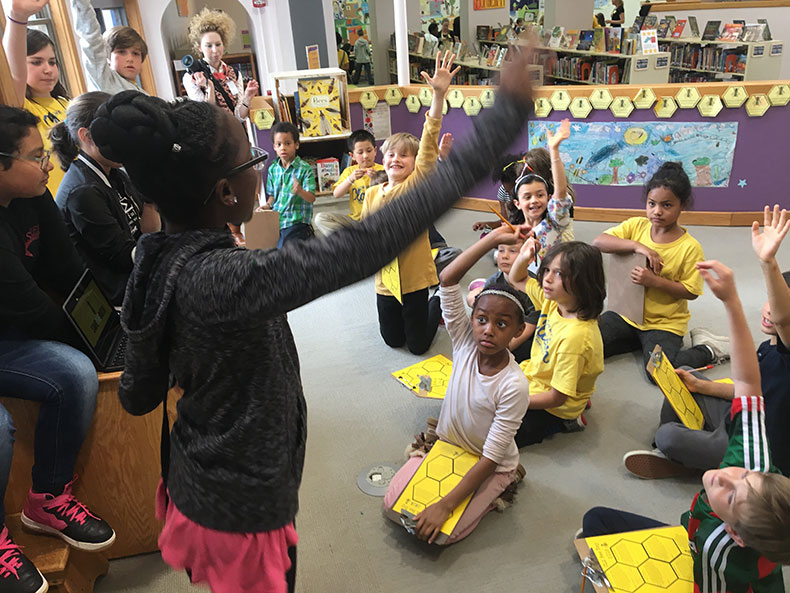
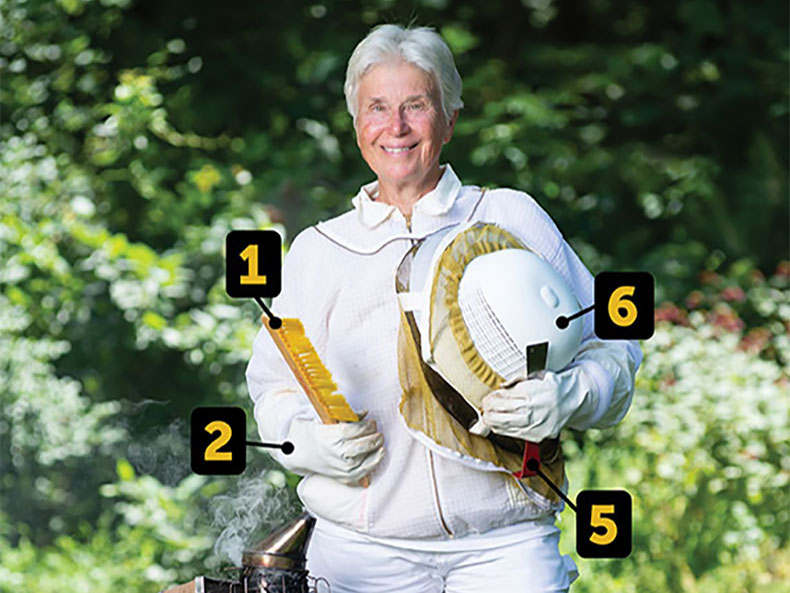


Comments (2)
brett peloquin |
February 26, 2020 |
reply
Burton Beasley |
February 27, 2020 |
reply